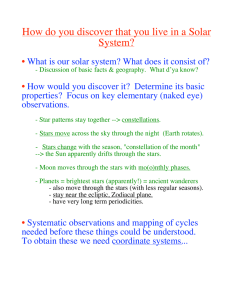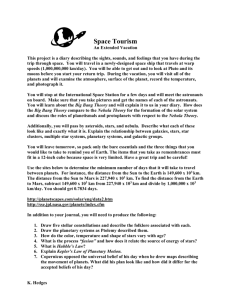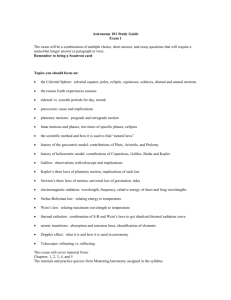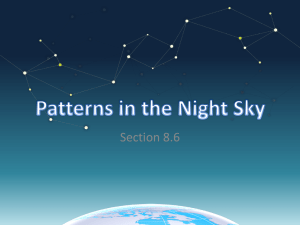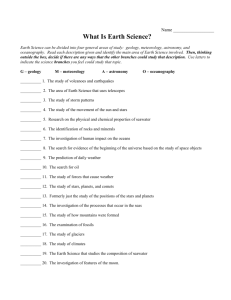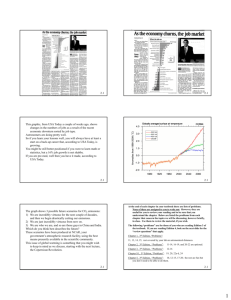PowerPoint
advertisement
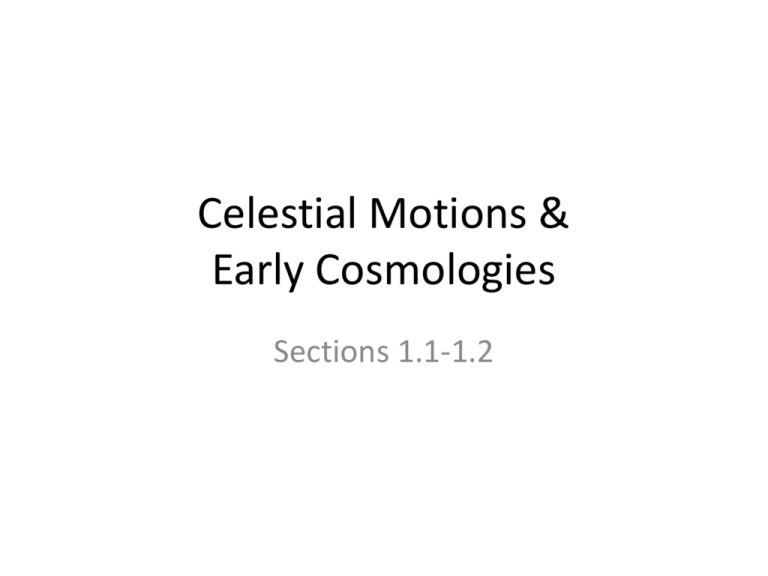
Celestial Motions & Early Cosmologies Sections 1.1-1.2 Reminders • Reading quiz for Chapter 1, Sections 3 and 4, due on Mallard prior to start of next class. • Weekly reflection #1 will be sent via email later today and will be due via email prior to start of class on Tuesday. Daily Motions of Sun & Moon • Daily solar motion across sky from east to west • Daily lunar motions across sky from east to west • Accounting for these motions: – What are the possible explanations? – Can more than one explanation be correct? – Which one is correct? Daily Motions of the Stars • Stellar motions across sky (describe) – Stars rise along the whole eastern horizon – Stars set along the whole western horizon – Stars move left to right along southern horizon – Stars move with circular motion in the north • Will the stars move in a CW or CCW direction? • Which of all the stars in the sky appears to stand still? • What accounts for these stellar motions? Monthly Lunar Motions • Moon’s daily motion is east to west across the sky, yet it at the same time more slowly west to east among the stars, moving 13 degrees eastward each day (its diameter each hour). • What accounts for this dual motion? • Over the course of several days, the moon appears to go through a set of phases. • What accounts for these phases? Yearly Solar Motions • The sun moves east to west across the sky, yet west to east among the stars, moving 1 degree eastward each day along the ecliptic. • What accounts for this diurnal motion? • Over the course of the year, the sun’s path across the sky shifts from highest (first day of summer) to lowest (first day of winter). • What accounts for this N-S-N motion? General Planetary Motions • Planets are “planetes” or wanderers. • Appear star like, changing in brightness. • Can be observed to move from day to day among the background of stars • Planetary motion is confined to the region of the zodiac, a band of 12 (or so) constellations in the direction of the ecliptic (sun’s path). • What accounts for planetary motions? Planetary Motions - Inferior • Mercury and Venus always stay near the sun in the sky; they are called inferior planets. • Observed in the west after sunset or in the east before sunrise. • Sometimes moving away from sun (eastward among evening stars and westward among morning stars) and at other times toward it. • What accounts for this motion? Planetary Motions - Superior • Mars, Jupiter, and Saturn can appear opposite the sun in the sky; they are superior planets. • When near the sun, the planets move eastward among stars, but not as fast as the sun so the sun “overtakes” superior planets. • When opposite the sun, planets “retrograde” moving with a reverse motion developing a loop or s-shaped pattern. • What accounts for this motion? Importance of the Heavens • To the ancient people, the sky was heaven – the home of the gods – and therefore perfect and unchanging. Planets were living gods. • The first scientists were priests. • Ancient peoples used the sky: – to tell time and keep track of the seasons – to find directions – as a “cathedral of the stars” Explaining Observations • Caution! Each previous set of observations (solar, lunar, stellar, and planetary) has multiple explanations only one of which will be correct. • For example, the rising and the setting of the sun can be explained equally well with a: – rotating Earth (an sun-centered hypothesis). – revolving sun (an Earth-centered hypothesis). Philolaus’ (Pythagoras’) Cosmology Homocentric Spheres of Eudoxus http://www.youtube.com/watch?v=FnKNQwilPPc Retrogrades of Superior Planets
